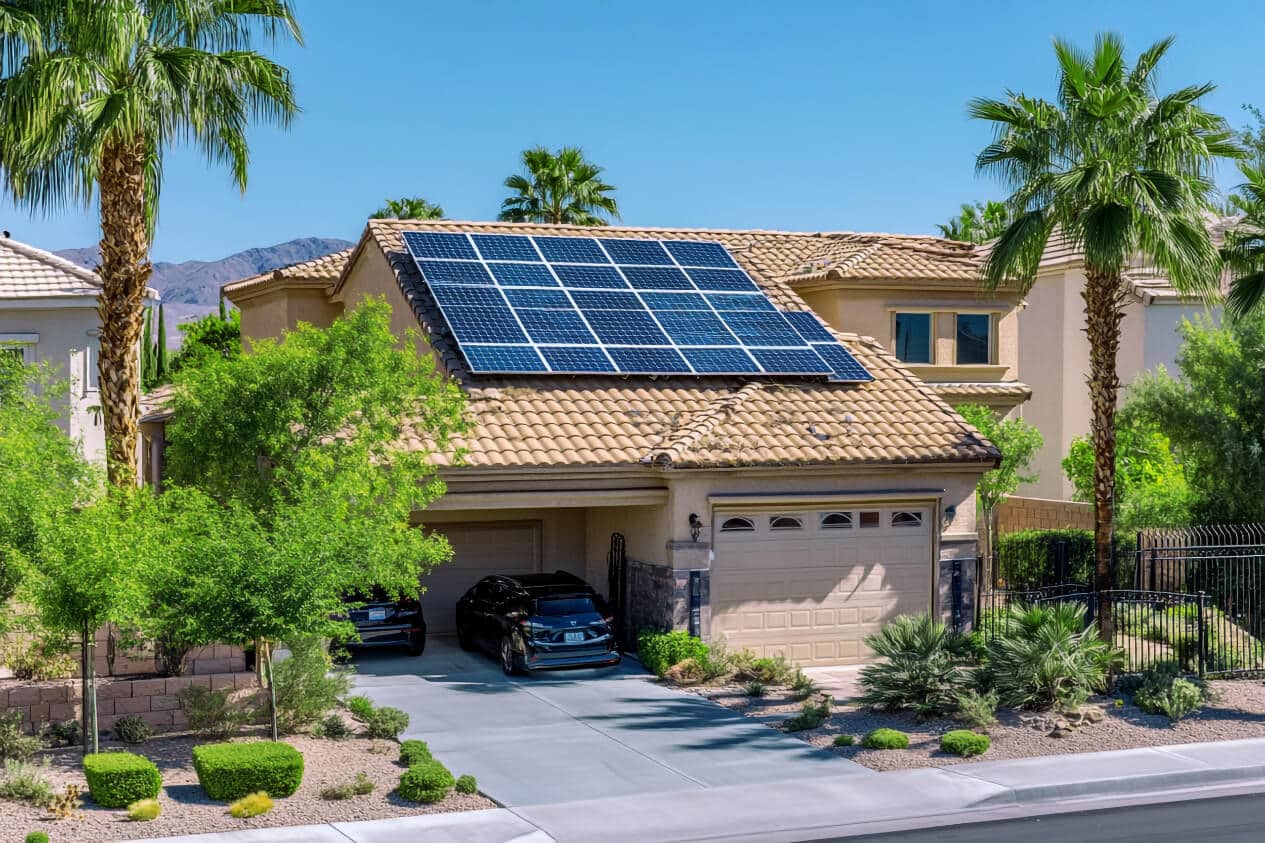When installing solar panels, one of the most important factors to consider is the angle at which they are placed. The angle directly affects how much sunlight the panels capture, which in turn impacts the amount of energy they can generate.
By choosing the best angle for solar panels, you can maximize the amount of solar energy your system produces, making it more efficient and cost-effective.
But what is the best angle for solar panels?
It depends on several factors, including your location, roof tilt, and the time of year. This article will try to answer these questions for you.
Why Does Solar Panel Angle Matter?
The angle of solar panels is essential for capturing maximum sunlight, as it directly affects how efficiently panels convert solar energy. When panels are positioned at the optimal angle, they face the sun for the longest duration each day, absorbing sunlight effectively and boosting energy output. This alignment ensures panels perform at their best year-round, yielding higher energy generation.
In regions with lower sun angles, particularly in winter, adjusting to a steeper panel angle can enhance efficiency by aligning the panels with the sun’s path. Tracking systems also support this by automatically adjusting the angle throughout the day, allowing panels to follow the sun’s movement. This dynamic positioning ensures panels receive continuous sunlight, resulting in consistent energy production.
Ground-mounted panels offer even greater flexibility, as they can be adjusted manually based on seasonal changes. This adaptability allows panels to maintain the ideal angle all year, maximizing energy generation and overall system efficiency. Whether mounted on a roof or the ground, the correct angle and orientation increase energy savings and make the most of your solar investment.
What Is the Best Angle for Solar Panels?
The best angle for solar panels plays a critical role in maximizing energy production. The right angle depends on several factors, but here are the key points.
- Latitude-Based Angle: In most cases, the ideal angle for solar panels is equal to your location’s latitude. This helps the panels capture the most sunlight throughout the year, optimizing solar energy
- Steeper Angles for Winter: In areas with colder climates or during winter months, steeper angles can be more effective. This helps the panels get more sunlight when the sun is lower in the sky.
- Ground-Mounted Flexibility: If you have ground-mounted solar panels, you have more freedom to adjust the angle as needed throughout the year. This flexibility ensures your panels are always positioned to generate the maximum energy possible.
- Tracking Systems for Constant Adjustment: Using tracking systems can make a big difference in regularly adjusting solar panel angles. These systems automatically adjust the angle of your panels throughout the day, ensuring they’re always facing the sun for maximum efficiency.
To summarize, the best angle for solar panels depends on your location and system setup. Whether you have rooftop or ground-mounted panels, proper solar panel installation and accurate panel facing are essential for getting the most energy from your system.
Factors That Affect Solar Panel Angle
Several factors influence what is the best angle for solar panels to work efficiently. By understanding these factors, you can ensure your panels are positioned correctly to generate the maximum energy.
- Roof Tilt: If your solar panels are installed on your roof, the tilt of the roof itself plays a big role in determining the angle. The natural slope of your roof can sometimes be close to the best angle for solar panels, but in some cases, adjustments may be needed. For ground-mounted systems, you have more flexibility to set the angle exactly where it needs to be.
- Latitude: The location of your home affects the optimal angle for your solar panels. As a general rule, the best angle for solar panels is close to the latitude of your location. For example, if you live at a latitude of 40 degrees, setting your solar panels at a 40-degree angle can help you capture the most sunlight throughout the year.
- Time of Year/Season: The seasons also affect the amount of sunlight your panels receive. In winter, when the sun is lower in the sky, adjusting to a steeper angle can help your panels capture more sunlight. If you have a ground-mounted system, you can easily change the angle throughout the year to ensure your panels are always at the best angle for solar panels for each season.
By considering these factors, you can make sure your panels are positioned to generate the maximum solar energy possible.
Which Is More Important: Angle or Orientation?
Both angle and orientation are essential for optimizing solar panels, but each has a distinct role. The angle refers to the tilt of the panels, which should be set based on your location to capture the most direct sunlight throughout the day and across seasons. The right angle helps maximize daily energy absorption.
Orientation is the direction panels face. In the northern hemisphere, panels should ideally face south to capture the maximum sunlight. If the orientation is incorrect, even a well-adjusted angle won’t fully optimize energy output. Together, the correct angle and orientation ensure the best energy production.
Solar Trackers: An Alternative to Static Angles
Solar trackers are devices that adjust the position of your solar panels to follow the movement of the sun throughout the day. This allows the panels to capture more sunlight and produce more energy compared to panels set at a fixed angle.
What Are Solar Trackers?
Solar trackers are systems that move your panels to follow the sun’s path. Unlike static panels that stay in one position all day, trackers continuously adjust the angle of the panels, ensuring they are always in the best position to capture sunlight.
Types of Trackers: Single-Axis and Dual-Axis
- Single-axis trackers move your panels along one axis, usually from east to west. They are more affordable than dual-axis trackers but still increase energy production by following the sun’s daily path.
- Dual-axis trackers move along two axes, both horizontally and vertically. This allows them to track the sun throughout the day and the year, making them more efficient but also more expensive and complex.
Pros and Cons of Using Solar Trackers
While solar trackers offer several advantages, they also come with some drawbacks. Here’s a closer look at the pros and cons of using solar trackers.
Pros:
- Increased Energy Output: Solar trackers enhance system efficiency by adjusting to the sun’s movement. Single-axis trackers can increase energy by 20-30%, while dual-axis trackers boost output by up to 40%.
- Ideal for Ground-Mounted Systems: Trackers are best suited for ground-mounted setups, making them great for large properties, solar farms, and open commercial spaces.
- Optimizes High Sun Exposure: In sunny regions with long daylight hours, trackers maximize annual energy production by ensuring optimal sunlight capture.
Cons:
- Higher Costs and Maintenance: Trackers are pricier to install and maintain than static systems, and for some residential setups, the costs may outweigh the energy gains.
- Space Requirements: Trackers need more room to operate, so they may not suit rooftops or small properties, where static panels are more practical.
- Weather Sensitivity: Trackers are vulnerable to extreme weather; high winds can impact their operation and lead to potential maintenance needs.
Solar trackers are ideal for maximizing solar system efficiency by adjusting panels to follow the sun, capturing more sunlight than static systems. Although they involve higher costs and maintenance, the energy gains are significant, particularly for large installations or sunny regions.
Conclusion
The angle at which solar panels are placed is crucial in determining how effectively they can generate energy. High-quality solar panels placed at the wrong angle can have an unsatisfying performance, whereas the right angle can ensure even mediocre-quality solar panels generate energy at their maximum pace.
Solar trackers are an effective way to ensure solar panels are always positioned to capture the most sunlight. Adjusting to the sun’s movement throughout the day significantly increases energy production compared to static systems.

